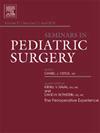Predicting and managing liver fibrosis in biliary atresia
IF 1.4
3区 医学
Q3 PEDIATRICS
引用次数: 0
Abstract
Regardless of the underlying etiology and success of PE, progressive liver fibrosis and eventually cirrhosis represent the dominant pathology and the end-stage of BA. Ascending bile duct injury-induced cholestasis, inflammation and ductular reaction provide profibrogenic cytokine environment leading to myofibroblast activation and rapid progression of fibrosis especially after unsuccessful portoenterostomy. Although liver fibrosis and development of cirrhosis play a crucial role in determining BA outcomes, the exact prognostic significance and dynamics of mild to moderate liver fibrosis remain unclear. Manual scoring systems categorizing the degree of liver fibrosis are prone to intra- and interobserver variability, whereas novel combinations of digital pathology with artificial intelligence quantification can provide accurate information on fibrosis structure and dynamics at the level of individual collagen fibers. Although several studies have analyzed noninvasive assessment of fibrosis at time of PE, including imaging-based elastography and different serum biomarkers, current knowledge on their accuracy during the postoperative follow-up of BA is scarce. While therapeutic management of liver fibrosis in BA remains in its infancy, the resolution potential for liver fibrosis has been demonstrated after successful PE. Achievement of effective antifibrotic treatment may require combination of different therapies with complementary modes of action like anti-inflammatory medication, antioxidants and bile acid lowering agents.
胆道闭锁患者肝纤维化的预测和治疗。
无论PE的潜在病因和成功与否,进行性肝纤维化和最终肝硬化是BA的主要病理和终末期。升胆管损伤引起的胆汁淤积、炎症和导管反应提供了促纤维化细胞因子环境,导致肌成纤维细胞活化和纤维化的快速进展,尤其是在门肠造口不成功后。尽管肝纤维化和肝硬化的发展在决定BA结局中起着至关重要的作用,但轻至中度肝纤维化的确切预后意义和动态尚不清楚。对肝纤维化程度进行分类的人工评分系统容易在观察者内部和观察者之间发生变化,而数字病理学与人工智能量化的新组合可以在单个胶原纤维水平上提供关于纤维化结构和动态的准确信息。尽管有几项研究分析了肺栓塞时纤维化的无创评估,包括基于成像的弹性成像和不同的血清生物标志物,但目前关于其在BA术后随访中的准确性的知识很少。虽然BA肝纤维化的治疗管理仍处于起步阶段,但在PE成功后,肝纤维化的解决潜力已得到证实。实现有效的抗纤维化治疗可能需要结合不同的治疗方法,并补充作用模式,如抗炎药物,抗氧化剂和胆汁酸降低剂。
本文章由计算机程序翻译,如有差异,请以英文原文为准。
求助全文
约1分钟内获得全文
求助全文
来源期刊

Seminars in Pediatric Surgery
PEDIATRICS-SURGERY
CiteScore
2.80
自引率
5.90%
发文量
57
审稿时长
>12 weeks
期刊介绍:
Seminars in Pediatric Surgery provides current state-of-the-art reviews of subjects of interest to those charged with the surgical care of young patients. Each bimontly issue addresses a single topic with articles written by the experts in the field. Guest editors, all noted authorities, prepare each issue.
 求助内容:
求助内容: 应助结果提醒方式:
应助结果提醒方式:


